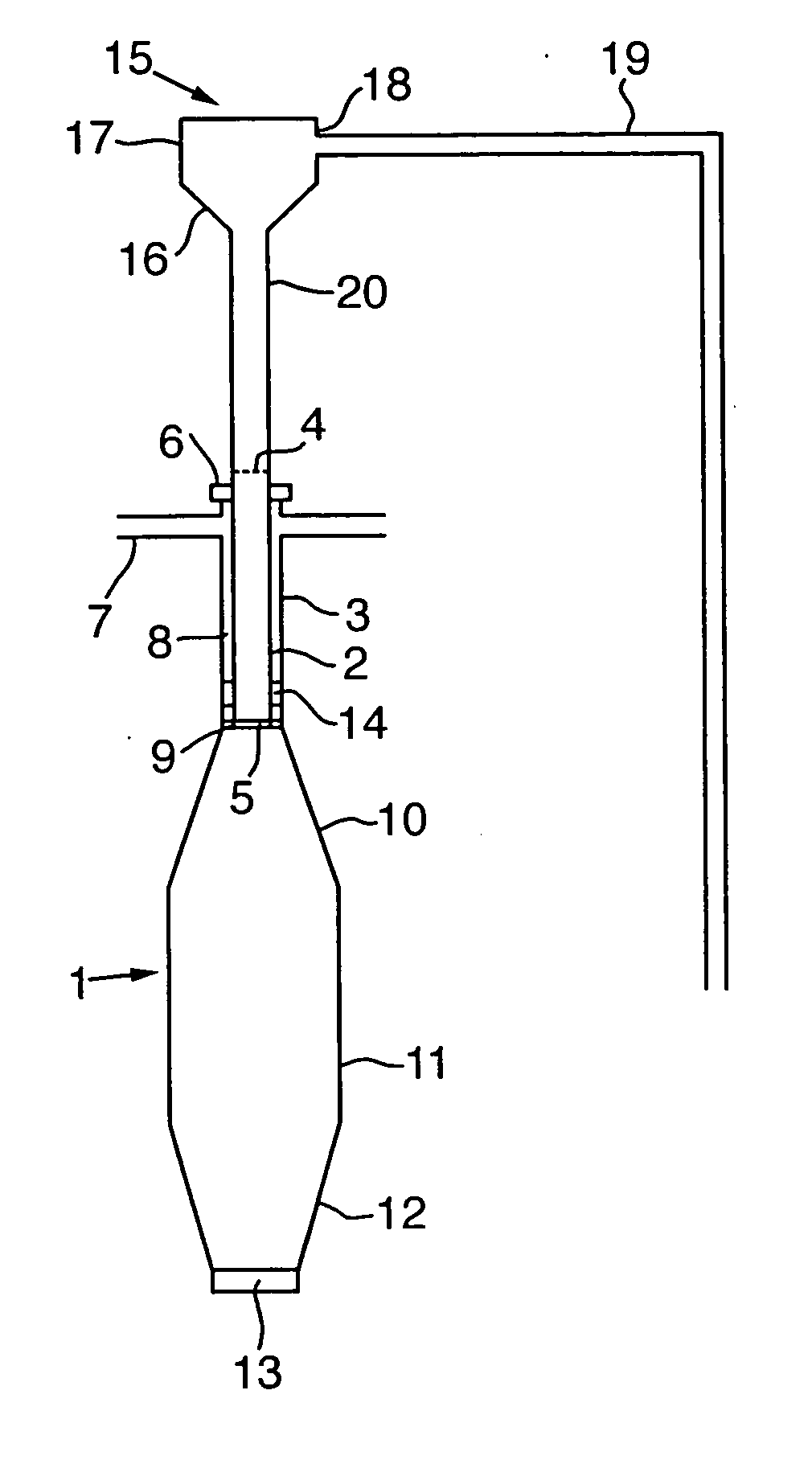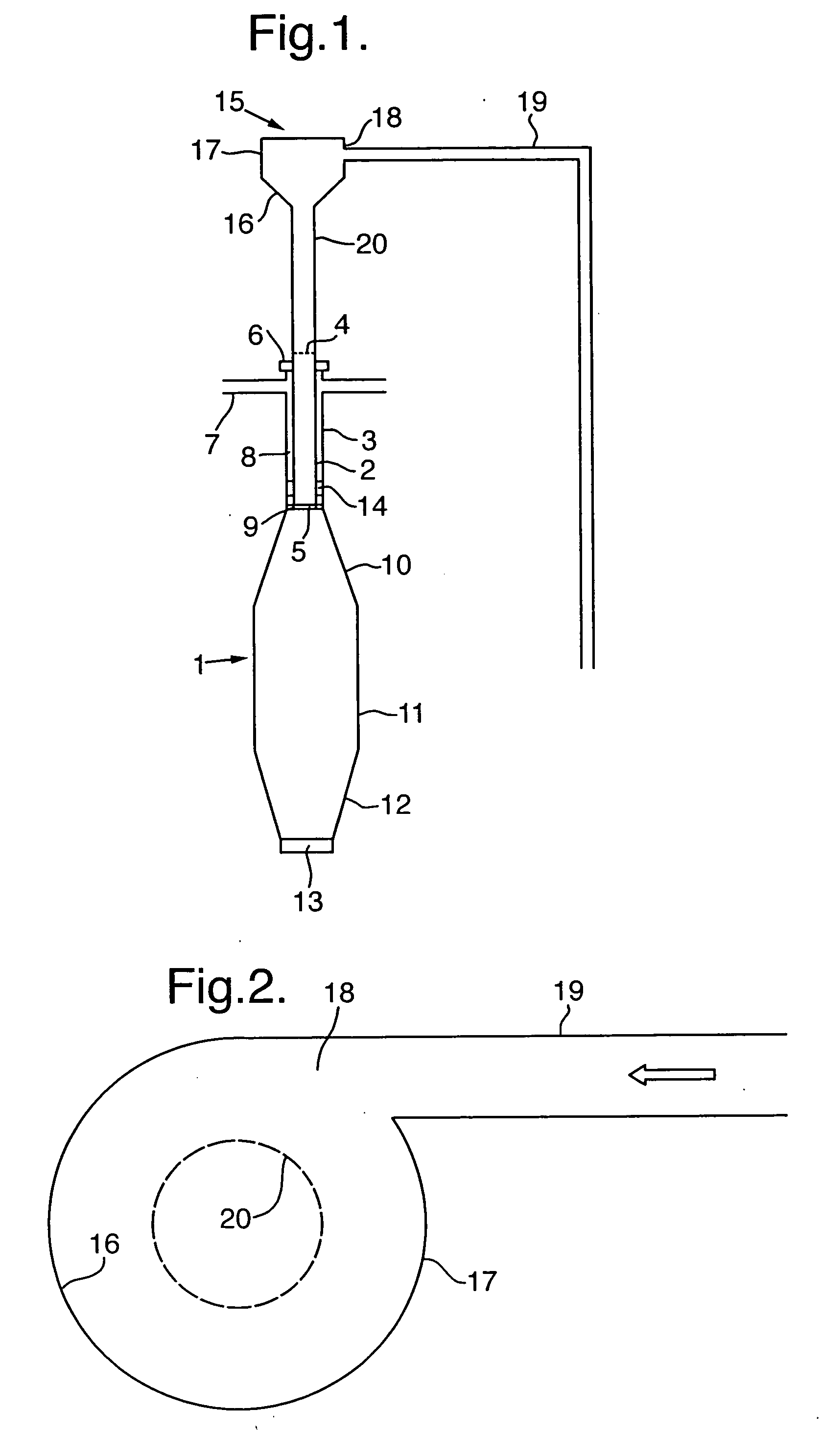Apparatus and process for vaporizing a heavy hydrocarbon feedstock with steam
a technology of heavy hydrocarbon feedstock and apparatus, which is applied in the direction of evaporation, separation processes, hydrocarbon oil treatment products, etc., can solve the problem that the entire construction would require expensive plot spa
- Summary
- Abstract
- Description
- Claims
- Application Information
AI Technical Summary
Benefits of technology
Problems solved by technology
Method used
Image
Examples
Embodiment Construction
FIG. 1 shows a side-view of a mixing nozzle 1 for supplying superheated steam to a partially vaporized heavy hydrocarbon feedstock for total vaporization thereof. The nozzle 1 comprises an inner, or first, tubular element 2 and an outer, or second, tubular element 3 having coinciding longitudinal axes. The inner tubular element 2 is open at one end to form an outlet 5 for the partially vaporized heavy hydrocarbon feedstock, while the inlet end 4 is connected with a straight feed inlet pipe 20 having the same diameter as the inner tubular element 2. The outer tubular element 3 being open at one end, is closed at the other end by means of a flange 6 welded to the inner tubular element 2. Inlet nozzles 7, being substantially equally distributed over the circumference of the outer tubular element 3, are provided for the supply of superheated steam into an annular space 8 between the inner tubular element 2 and the outer tubular element 3. In order to prevent the occurrence of swirls in ...
PUM
| Property | Measurement | Unit |
|---|---|---|
| angles | aaaaa | aaaaa |
| partial pressure | aaaaa | aaaaa |
| boiling | aaaaa | aaaaa |
Abstract
Description
Claims
Application Information
 Login to View More
Login to View More - R&D
- Intellectual Property
- Life Sciences
- Materials
- Tech Scout
- Unparalleled Data Quality
- Higher Quality Content
- 60% Fewer Hallucinations
Browse by: Latest US Patents, China's latest patents, Technical Efficacy Thesaurus, Application Domain, Technology Topic, Popular Technical Reports.
© 2025 PatSnap. All rights reserved.Legal|Privacy policy|Modern Slavery Act Transparency Statement|Sitemap|About US| Contact US: help@patsnap.com


